| 1 | Checkered keelback |
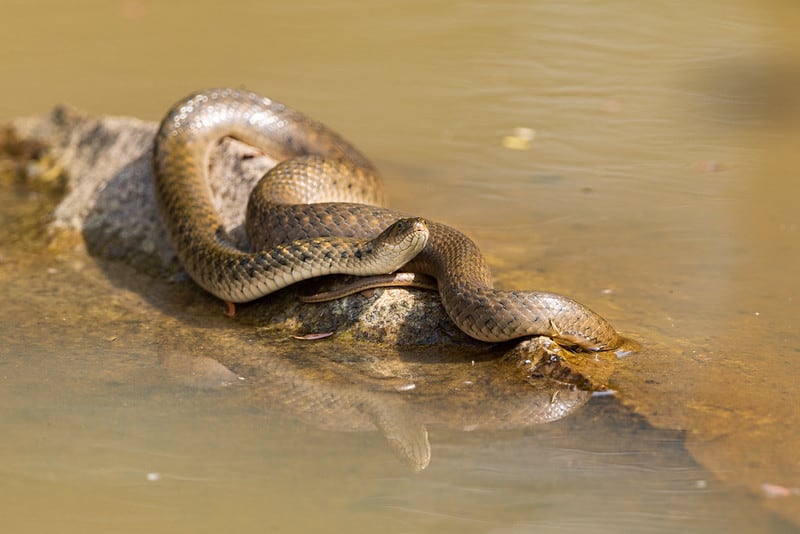
One of the top egg layers in the Indian subcontinent, alongside the Indian python. The checkered keelback (Fowlea piscator) is believed to be the most common snake in India by headcount, out of well over 200 species. It’s a water-loving snake with a maximum length of 175cm, which is typically found in rice paddies, rivers, lakes, concrete drainage ditches and manmade ponds.
One reason for their success is that checkered keelbacks lay an extremely high total of eggs. The typical range is 30-70, and there’s various reports of over 100 per batch. Other figures thrown around are 8-88 and 8-91, making this species a state of the art egg-layer either way.
Because of these egg totals, checkered keelbacks thrive no matter what nature throws at them. No matter how many hatchlings get picked off by storks or crocodiles, there’s always another influx ready to take their place. The highest total of all time, and one of the highest for any snake, was a batch of 120 newborn checkered keelbacks from the Ananad District of Gujarat state, reported in 2018.
Checkered keelback eggs average at 1.8 x 2.7cm, and are laid in March and April. Mothers have to be stealthy to prevent their eggs from being swallowed up, and their favourite laying sites include termite mounds, crevices in wells, and beneath rotting vegetation. Mothers are also somewhat caring, as they stay with their clutch of eggs post-laying, during the incubation period of 37-60 days.
| 2 | Mud snake |
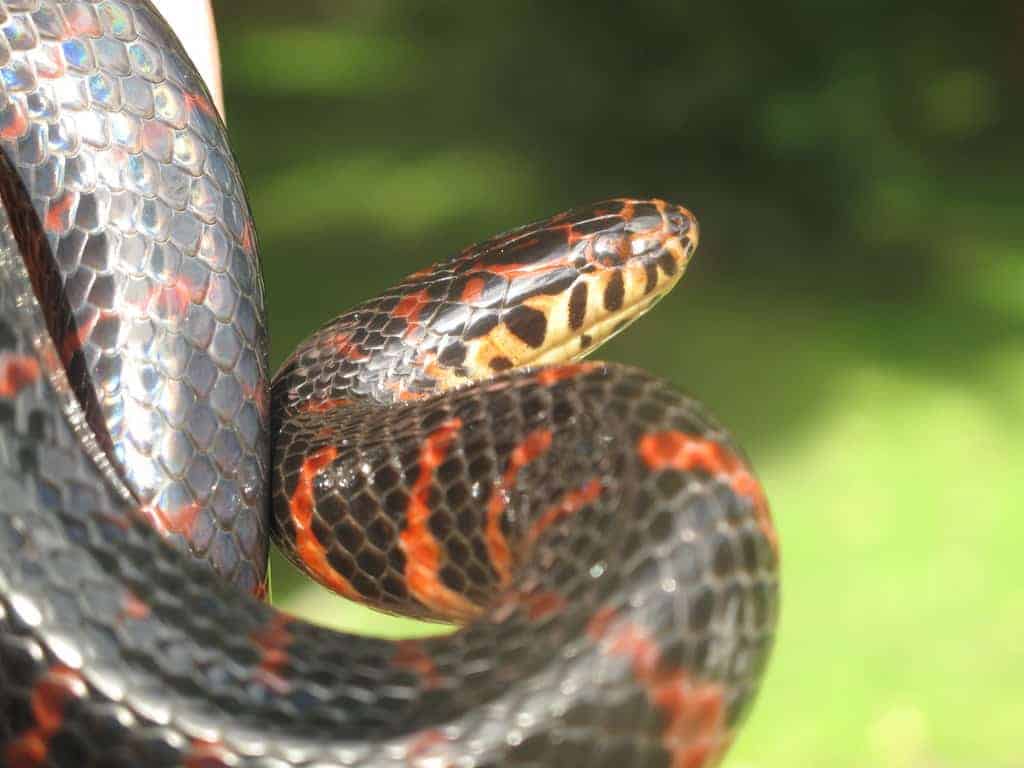
Living in water has a close correlation with egg totals in snakes, as the quantity of predators in aquatic landscapes is particularly vast. The mud snake (Farancia abacura) lives in southeastern US states such as Florida, Georgia and Louisiana, and mainly inhabits stagnant waterbodies such as swamps, straying to land during heavy rainfall.
This species is no threat to humans, and faces many predators in its swampy habitats, including American alligators, cottonmouths and racoons. Their solution is to lay a huge amount of eggs, and mud snakes hold the official record for US snakes, at a maximum of 111 eggs laid per clutch. The totals are highly variable, with as little as 4 per batch, but they’re usually in the dozens.
One reason for this is length, as Farancia abacura is one of the USA’s longest snakes, at a record of 207.0cm. Yet they lay far more eggs than the actual longest, the bull snake (record 267.7cm), at an average of 5-19. Like the checkered keelback, their watery habitats are a huge influence.
Mother mud snakes were once believed to zealously guard their eggs, but this turned out to be false. When researchers drew near, most mother mud snakes simply hid their heads in their coils. When one researcher reached out to touch an egg, the mother didn’t defend them, but fled, by breaking through the nest material and vanishing into the undergrowth.
| 3 | Jararacussu |
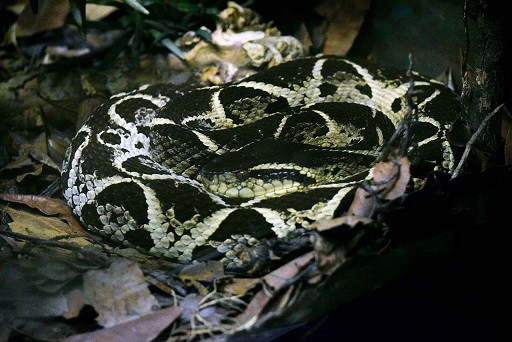
In snakes, length has a close, though not exact correlation with the quantity of newborns. The largest common garter snake mothers will lay over 40 eggs, while small mothers average at just 20, and this rule also applies within different genera of snakes.
Out of 30 Bothrops lanceheads inhabiting Brazil, the jararacussu is the longest at a maximum of 220cm. It’s also the most prolific breeder of the lot, producing an average of 13-40 live young per session, and a confirmed record of 73.
This shock and awe breeding strategy has led to a huge gender size disparity, with females being up to twice as large as males, at an average to 2 metres versus 1 metre. Jararacussus are a creature of dark, thorny forests in eastern Brazil, including along the Atlantic coast near Rio de Janeiro. Locals are terrified of these tangled forests, and for good reason, as jararacussu venom can unleash swelling, extreme pain, and severe kidney damage.
As larger females lay more eggs, it’s likely that jararacussus are caught in an evolutionary spiral whereby growing continuously larger increases their survival chances. In 500,000 years, they could be bigger still, pushing to 2.5 metres. Like all Bothrops lanceheads, this species lays live young rather than eggs.
| 4 | Boa constrictor |
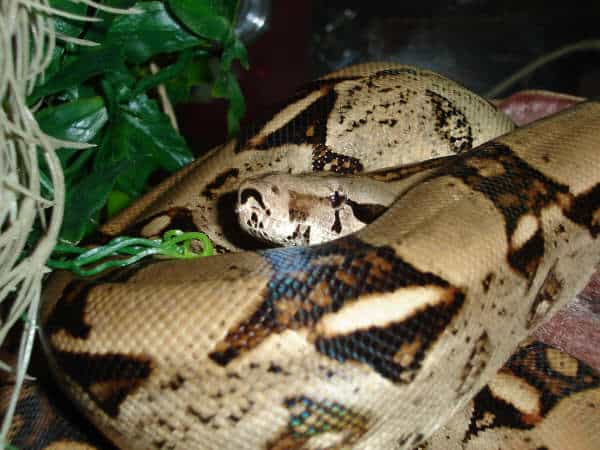
One of the world’s most common snakes, and one of the most prolific birthers. It’s likely that one of these characteristics led to the other, but either way, the record number of young per batch was 63, while the average is 25.
Boa constrictors (Latin name: Boa constrictor) occupy every country in South America except Chile, and can live for an estimated 40 years. Their habitats are flexible, including grassland, jungles, agricultural areas and even towns. Combine this with pumping out 30+ babies annually, and you have a perfect recipe for continent-wide domination.
Babies are independent instantly, with no maternal care, and measure 35-50cm versus 2-3 metres for a fully grown adult. The largest wild boa constrictors are believed to exceed 4 metres.
At one point this species was under confusion, as this 1985 paper discussed how northern colonies produced much smaller litters. Those from central America (Costa Rica, Honduras, etc) had totals ranging from 10-36, while those from South America (Brazil, Bolivia) pumped out 6-63. The difference was vast. What they didn’t realise then was that Central American boas are actually a different species called Boa imperator, which was officially separated off in 2009. Not all boas are massive breeders, as the ringed tree boa of Panama averages at just 13 per litter.
| 5 | Puff adder |
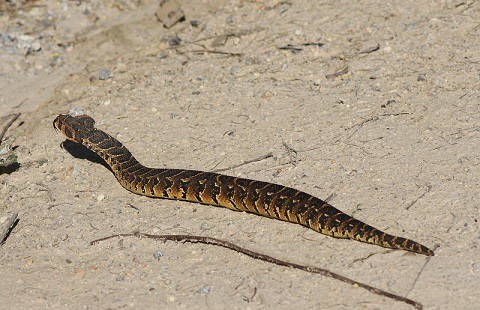
Being long is one way to fit dozens of eggs inside you, but so is being exceptionally thick. This is what the puff adder of sub-Saharan Africa accomplishes. Puff adders are a decent length of 1-1.2 metres (with extreme individuals reaching 1.9m), but are more renowned for their crushing heftiness, which they use to pounce on passing rodents and inject a powerful cytotoxic venom.
Along with gaboon adders and east diamondback rattlesnakes, puff adders are the thickest non-constrictor, and this allows for an average newborn total of 40-60, laid every couple of years. Puff adders may hold the absolute record for a single snake litter, at 156 newborns, produced by a Kenyan female in a Czech zoo.
Like the boa constrictor, puff adders are extremely widespread, occupying all countries south of the Sahara desert. Their huge egg totals are doubtlessly involved in this success. Puff adders also have a particularly long gestation period, at 7-9 months, and occasionally over a year. Courtship is gruelling in the puff adder world, and males will wrestle to secure the females’ affections. Seven males have been spotted following a single female before.
| 6 | Brown watersnake |
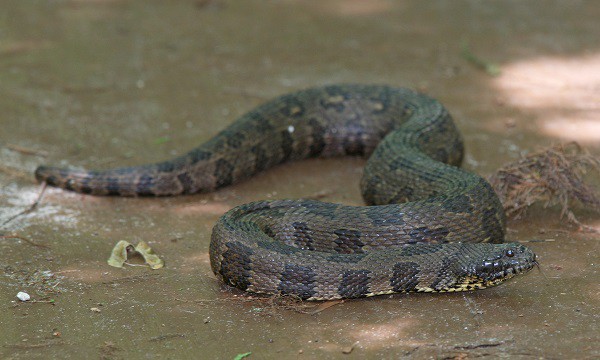
The USA is home to 10 watersnakes of the Nerodia genus, several of which are very common. All are non-venomous, all lay live young, and most interestingly, all lay a high total of newborns per litter. Chief among them is the brown watersnake (Nerodia taxispilota), which inhabits reservoirs, lakes and streams alike.
Brown watersnakes are a species of the US south, including in Louisiana, Florida, Georgia, the Carolinas and Virginia. A 1985 report produced newborn data from two locations. Brown watersnakes from Chesterfield County, Virginia laid 19-63 live young per batch, while those from a Savannah River site in South Carolina produced 7-63. There was little difference by state, as the totals were huge wherever they sampled.
Confirmed predators of the brown watersnake include American alligators, eastern racers, American white ibis, cottonmouths, great blue herons, snapping turtles and racoons. If each of these predators ate just two brown watersnakes from each litter, the species would be in serious trouble – if they laid a normal sized litter, that is. A litter of 5 would cause them to go extinct, but a litter of 50 gives them nice wiggle room, a flexible cushion.
With a record length of 177.8cm, brown watersnakes have plenty of room for these eggs in their bodies. Another member is the diamondback watersnake (Nerodia rhombifer), found in the central US, and this lays 13 to 62 live young.
| 7 | Fer-de-lance |
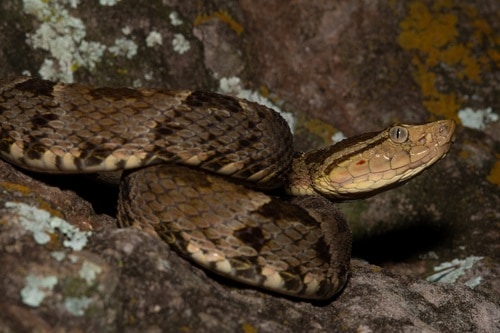
The deadliest of the Bothrops pitviper group, with a cytotoxic venom capable of causing life-changing amputations. Even worse, this species lays the most babies at once, producing a whole new team of fer-de-lances ready to unleash chaos in central America. An old 1985 report found that fer-de-lances from Costa Rica produced 48-86 younglings per batch, while those from Panama/Honduras produced 32-71.
Those newborns measure 28-35cm, and weigh just 7-13 grams. The average adult measures 100-120cm, reaching a maximum of 250cm, and achieving a weight of 6kg.
Precisely how many babies they produce varies strongly by region. One study took place entirely within Costa Rica. It found that on the northern Atlantic side, they gave birth in September-November, with an average litter size of 41.1, and a range of 8 to 86. On the southern Pacific side, the average was far lower at 18.6, with a range of 8-40, Here, they gave birth significantly earlier, in April to June.
Another baby machine is their close cousin, the common lancehead (Bothrops atrox) of South America, but this species reaches a maximum of 56 – close but no cigar. The Bothrops pitvipers aren’t uniform baby machines, as the Brazilian cerrado lancehead (Bothrops pauloensis) further south produces just 4-10 neonates per session.
| 8 | Indian cobra |
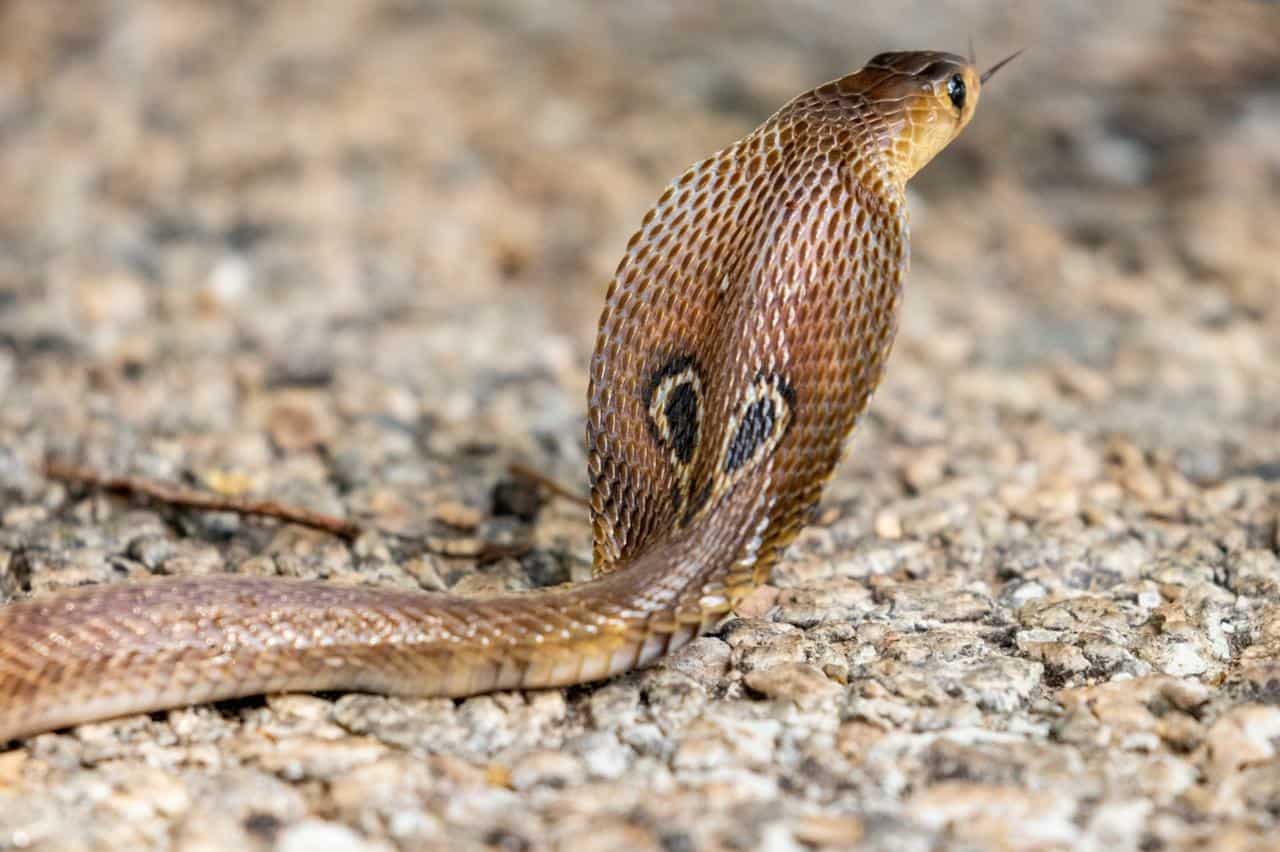
India’s main cobra, with an average length of 1 metre and an occasional length of 1.5 metres. Cobras aren’t famed for their high egg totals, as the red spitting cobra of Ethiopia lays a moderate 6-21 per batch. India cobras certainly don’t lay stratospheric totals either, but according to a 2021 report, they may be the most prolific egg layer of the true cobra genus (Naja).
Scientists reacted to a distress call in Alappuzha District, Kerala state, and discovered a 1.5 metre long cobra sitting on an unusually large pile of eggs, near some brick rubble. Counting by hand revealed a huge total of 45 small white eggs, of which 3 were badly damaged.
Before this, the record egg clutch for an Indian cobra was just 32, while the average is approximately 10-24. The scientists were cautious, and briefly debated whether this was a communal nest, the combined eggs of two mothers. However, no Indian cobras have ever been observed to nest together (unlike some rattlesnakes). Therefore, a great new record was established.
Monocled cobras in Thailand are also decent egg layers, producing an average of 23.5 eggs per clutch.
| 9 | Common garter snake |
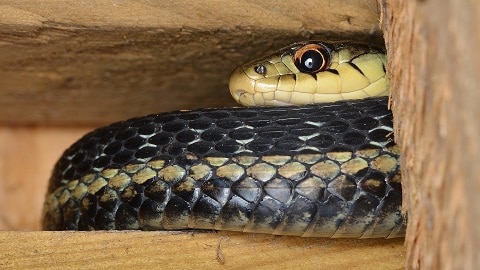
The common garter snake (Thamnophis sirtalis) is virtually ubiquitous across the USA, and is famous for gathering together in vast, writhing colonies of up to 1000 individuals, in order to preserve precious winter warmth. But they also lay a vast amount of babies, with several batches of over 80 being recorded. Most litters range from 10-40, and over 50 isn’t exceptional.
Common garter snakes inhabit 47 out of 48 lower US states (excluding Arizona), but one researcher found that the litter size was highest in Ohio and the surrounding states, at an approximate latitude of 40 degrees, as these had the perfect habitat for the species. In extremes of cold and warmth, such as the Californian west coast or central Canada, the litter size was significantly smaller.
At birth, common garter snakes measure 12-23cm, before reaching 60-100cm in adulthood (record: 137.2cm). Their colours stay similar throughout their lives, except that youths are slightly brighter. They tend to give birth in late summer, and their favourite spots to produce these baby batches include burrows, cracks in walls and below rock piles.
Common garter snakes have no instinct for maternal care, and abandon their babies immediately after birth.
| 10 | Burmese python |
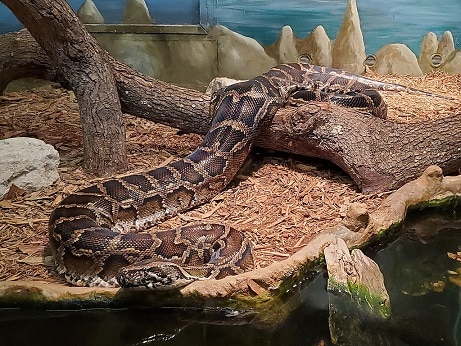
The Burmese python is Florida’s number one invasive species. Since escaping from zoos in the 1990s, they’ve somehow ballooned to an estimated total of 300,000, most of which are found in the swampy everglades. They’ve proven impossible to eradicate, and one reason for this extreme takeover is the colossal amount of eggs they lay.
At an all time record of 5.79 metres, Burmese pythons are part of the top 10 longest snake species worldwide, and their vast egg totals are an extension of this. In 2022, scientists captured a Burmese python measuring 5.4 metres and weighing 215 pounds, which was the heaviest snake ever recorded on US soil. Officials announced that 122 eggs were found inside its belly.
July 2023 saw a slightly different record, as a Burmese python was found protecting a nest of 111 eggs. This was the most found outside the species’ body.
Compared to cobra eggs, a Burmese python’s are yellower in colour and less elongated. Some of them resemble small jagged rocks rather than eggs. Burmese pythons are more caring mothers than most, curling around their eggs and shivering in order to increase their temperature.
